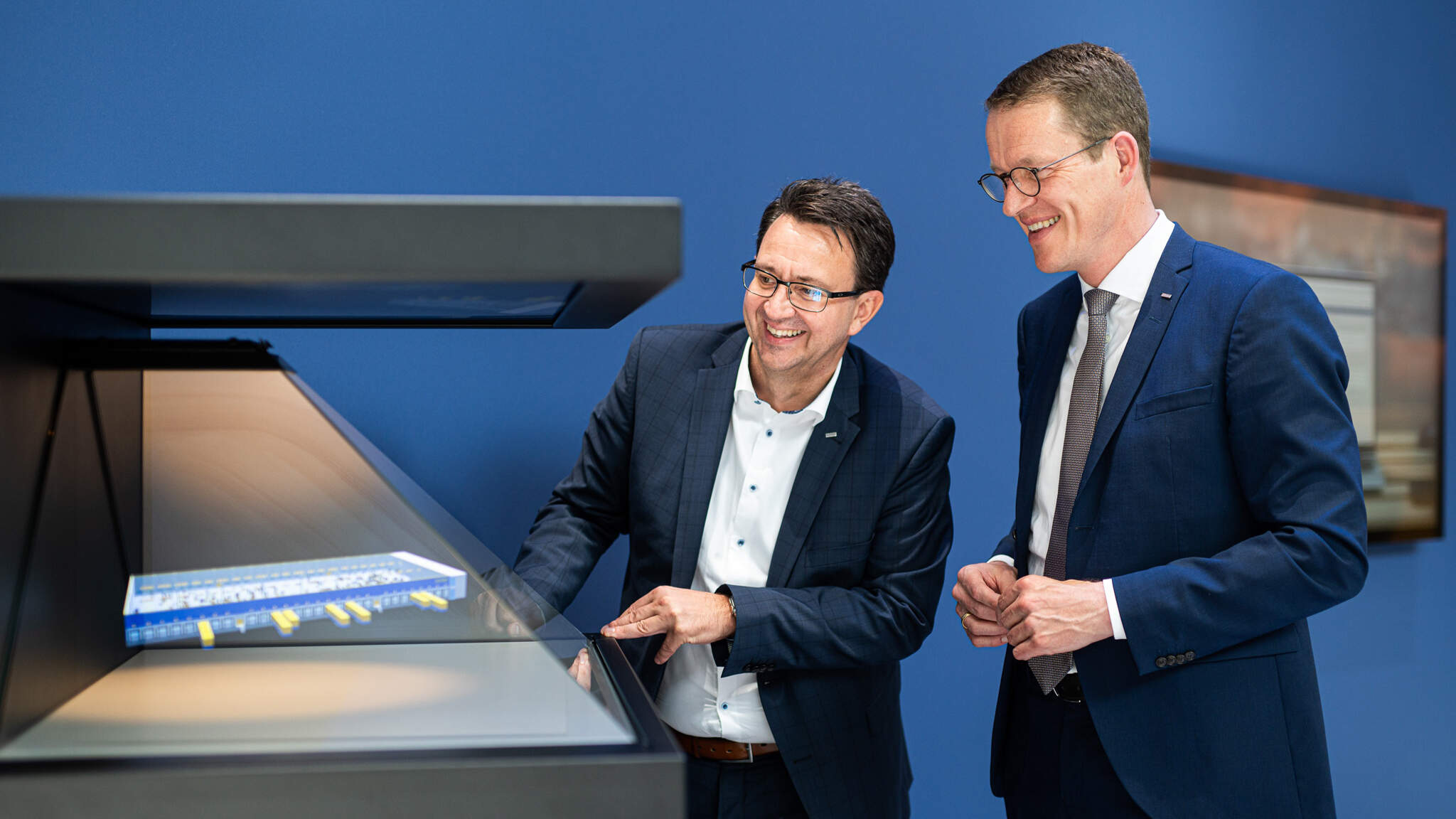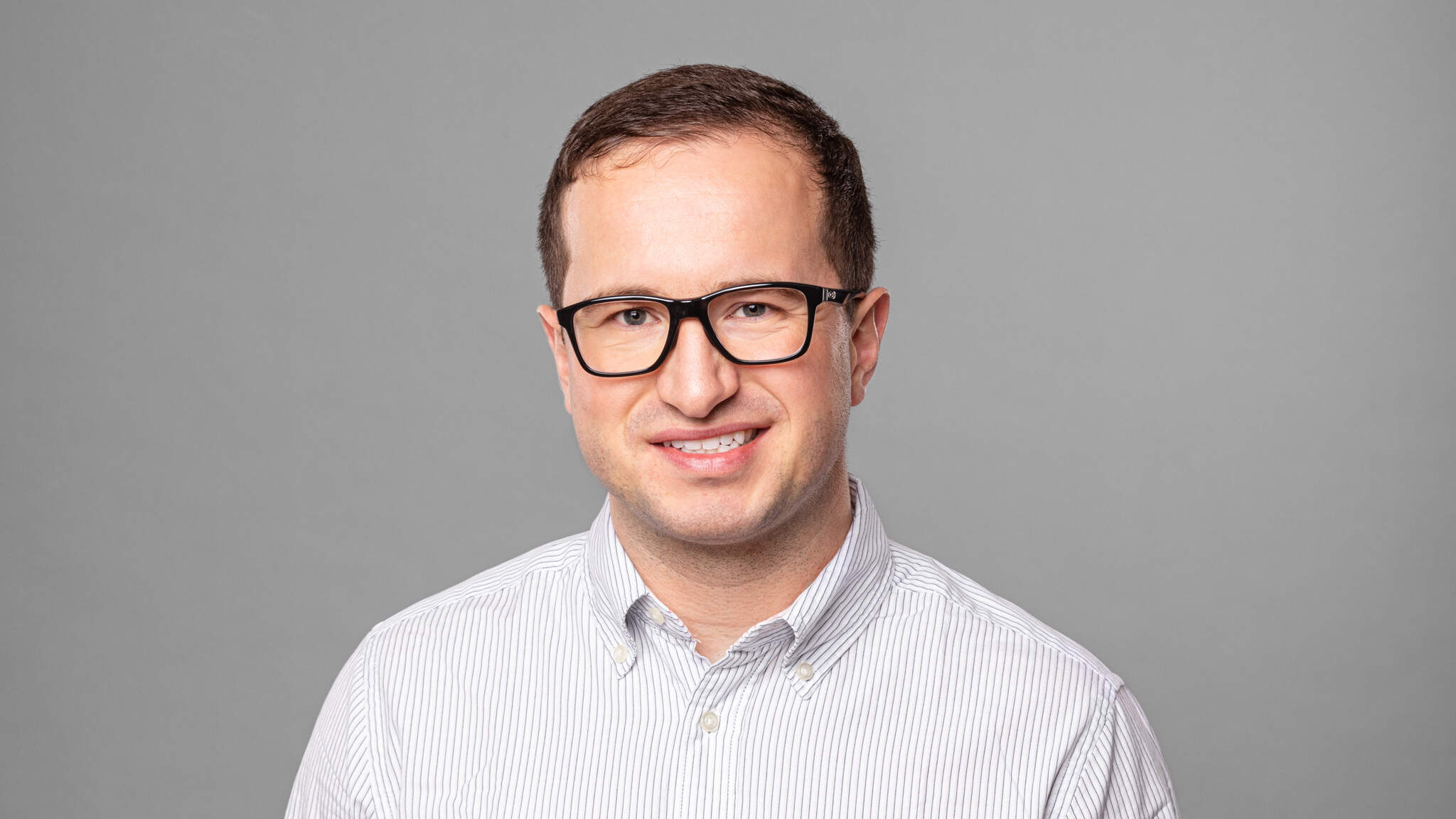Programming the future

By enabling transparent processes, real-time shipment tracking, short response times, and precision control of supply chains across countries and continents, digitalization is taking logistics services at DACHSER to a new level. What does that mean for the DACHSER network? And what quantifiable benefits does IT offer customers? These are the questions we put to DACHSER CEO Burkhard Eling and CDO Stefan Hohm.
The worlds of work and of everyday life are becoming more and more digitalized. What is the situation at DACHSER?
Stefan Hohm: In the digital transformation, we basically focus on three core areas. First, the consistent but always practical digitalization of business processes and the development or provision of tools and solutions that deliver tangible added value to customers, employees, and partners. Second, the continuous modernization of our own core systems for transport and warehousing. Here, the IT department takes on the role of an orchestrator, as this task increasingly includes the secure integration of third-party systems. Third, it’s important to get employees on board for this journey and create a “digital mindset,” by which I mean a positive digitalization culture within the company. We’re working very hard on all three core elements of the IT transformation and are already seeing some successes.
Burkhard Eling: These three areas of digital transformation make it clear that in a multilayered company like DACHSER, we need to think far beyond technology issues. It’s not enough just to change processes and systems; we also have to look at the way we think, how we work together, and how we can effectively harness the opportunities and potential of digitalization in our daily work to benefit our company and our customers.
But digitalization isn’t exactly uncharted territory at DACHSER. What foundations is the company building on here?
B. Eling: DACHSER was already setting great store by systems and transparent data exchange at a time when other players were still purely analog. As a result, over the years we’ve been able to devote internal resources to developing software and systems that are precisely tailored to the needs of our customers and the DACHSER network.
S. Hohm: This has brought us excellence in processes, in operational implementation, and in the information world above it, aka eLogistics, at a very early stage. We can now build on this very well. And there’s a lot in the pipeline. For example, we’re working on enabling completely end-to-end data flows, especially for intercontinental cross-modal transports. There are also still too many paper documents in circulation and the level of automation in logistics facilities and processes is often rather low. That’s why there’s still a lot of repetitive, manual work.
B. Eling: At the same time, the requirements for transparency and adaptability as well as for the efficient and sustainable use of scarce resources are increasing. We therefore need to think and act even more digitally in all areas.
To what extent have the recent crises had an impact on DACHSER´s digitalization strategy?
B. Eling: They have certainly served to again raise awareness of the importance and necessity of digitalization. The better the information about the current situation and about unusual occurrences in the network, the faster and more targeted our response. Identifying weak points early on and finding solutions—that’s what customers expect from DACHSER in challenging times.
S. Hohm: For many of our customers, the question uppermost in their minds is: How can I build more resilience into my supply chain? In addition to building up transparent inventories in our warehouses, digital technologies play an important role: when supply chain disruptions occur, greater transparency plus fast and accurate information shorten response times. Customers from the home and garden, cosmetics, and fashion sectors are currently hard at work on omnichannel sales concepts that place high demands on a logistics partner’s IT capabilities. We’re also seeing great interest in zero-emission delivery to stores in downtown locations as part of our DACHSER Emission-Free Delivery concept.
B. Eling: We’ve launched research projects on certain topics, such as AI or digital twins, in our DACHSER Enterprise Lab with Fraunhofer IML. We’ve also set up a dedicated Competence Center Data Science & Machine Learning within the company, and it has already put a number of algorithms into practice—most recently for the machine classification of B2C delivery addresses.
Burkhard Eling is CEO at DACHSER. Stefan Hohm is CDO at DACHSER.
The more interfaces there are to the digital world, the more urgent the question of cybersecurity becomes. What is the situation at DACHSER?
B. Eling: The number of cyberattacks has increased rapidly in recent years, so the security of our software and of our digital infrastructure takes top priority. With the ISO 27001 certification and our IT setup, the consultants from Gartner have confirmed that we have a certain maturity here compared to the competition. But we must never allow ourselves to become complacent and have to weigh all the risks carefully.
S. Hohm: We’re going to transform central software and hardware structures in IT—paying particular attention to security—so as to increase availability while also ensuring greater flexibility and safeguarding the improved scalability of our applications.
Where is DACHSER’s digital journey headed?
B. Eling: Digitalization has a fundamental role to play if we are to reliably fulfill our mission in the future. In line with customer requirements for usability and transparency, we’re further developing our eLogistics applications for order placement and shipment tracking into an integrated, digital customer platform. Initial feedback from test customers shows that we’re on the right track, even though we’re still just getting started.
S. Hohm: Another pioneering move was our acquisition last year of kasasi, a logistics software provider that was founded in 2009. It develops innovative software products that optimize and bring transparency to transport processes for road, rail, and sea. This means we can offer our employees in the scheduling department as well as our customers further digital added value for transport planning, shipment tracking, and shipment control. For example, we can take telematics data from our more than 8,500 swap bodies and 5,000 trailers, combine it with shipment and planning data from our core transport management system, Domino, then analyze and clearly structure it.
What specific goal is DACHSER pursuing with this?
B. Eling: Our target picture for 2030 sets the course: we want our customers and partners to see us as the most digitalized logistics provider, one they can look to as an innovation leader in all areas, while at the same time living up to our high standards as a quality leader. As a global logistics provider, we are able to map door-to-door shipments across different modes of transport in a single system and have complete transparency about the situation in our network at all times.
S. Hohm: If our customers say, “I prefer to work with DACHSER because it’s the most professional, the most unflappable, the most convenient option,” then we’ve done a lot of things right. And that’s precisely our goal.
Thank you very much for the interesting interview.
